The NAB Show Centennial recently celebrated 100 years of innovation in the most fitting place possible: Las Vegas.
The annual show, which returned to Vegas for the second year in a row, following a short break during the pandemic, brings the broadcast, media, and entertainment industries together to “experience innovation in action and harness the power of possibility.”
What does that mean for podcasts and online video ads?
We looked at data from Q1 2023 to find out.

Advertisers Tiptoe into 2023
In Q1 2023, advertisers spent $33.3b on digital, print, and TV ads, representing a modest 5% YoY decrease. Even digital advertising, which accounted for 45% of Q1’s spend, decreased by 7%.
For the thousands of advertisers kicking off the new year, the reduction in spend was likely driven by the natural reset from the holidays, but more importantly, their adjustment to the uncertain economy—a level of uncertainty that led eMarketer to cut $5b from its 2023 digital advertising outlook.
According to eMarketer, ad spending won’t bottom out, but marketers are taking a long look at their budgets. Analysts said, “With inflation driving up operating costs and a potential recession looming, marketing is getting deprioritized. Advertisers that can afford to keep spending, will…But the longer the recession, the harder it becomes to maintain this strategy.”
Some ecosystems are still getting attention, including connected TV (CTV), which eMarketer expects will attract $26.92b this year.
Podcasts and online video ads (OLV) are two channels that could also get some love despite the uncertain macroeconomic times.
A mixed bag of podcasts
In 2016, podcasts were still relative nobodies in the digital world. In fact, just 21% of Americans over the age of 12 said they listened to podcasts back then.
But in less than a decade, that number has grown, with 41% of Americans over the age of 12 now saying they’ve listened to a podcast in the past month.
The growth of podcasting and other voice technology has caught the eyes of advertisers.
Although podcast ad spending dropped slightly in Q1 (4% YoY to $122mm), the format still has plenty going for it due to its broad appeal, authenticity, and lack of reliance on third-party cookies.
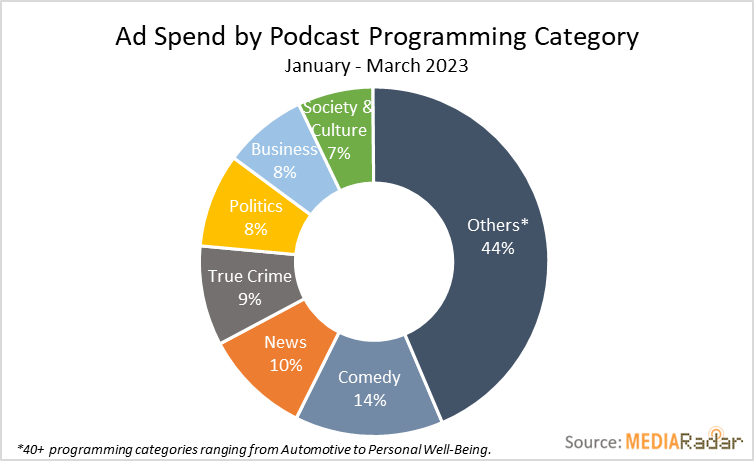
In Q1, five categories received a dominant share of ad dollars, including comedy, news, true crime, politics, business, and society & culture, collectively accounting for 56% of the podcast advertising investment in Q1.
Three programming categories stood out in Q1:
- Comedy: Advertisers from brands such as BetterHelp, Happy Money, and Squarespace spent $16.7mm on comedy podcast ads, up by 5% YoY.
- Crime: Ad spending on crime podcasts increased by 15% YoY to $11.2mm as advertisers from Amazon Music’s mobile app, HelloFresh, and SimpliSafe invested.
- Business: Business podcasts attracted $9.4mm in ad revenue, representing a 12% YoY increase, thanks to spending from Amazon.com, Capital One, and Shopify.
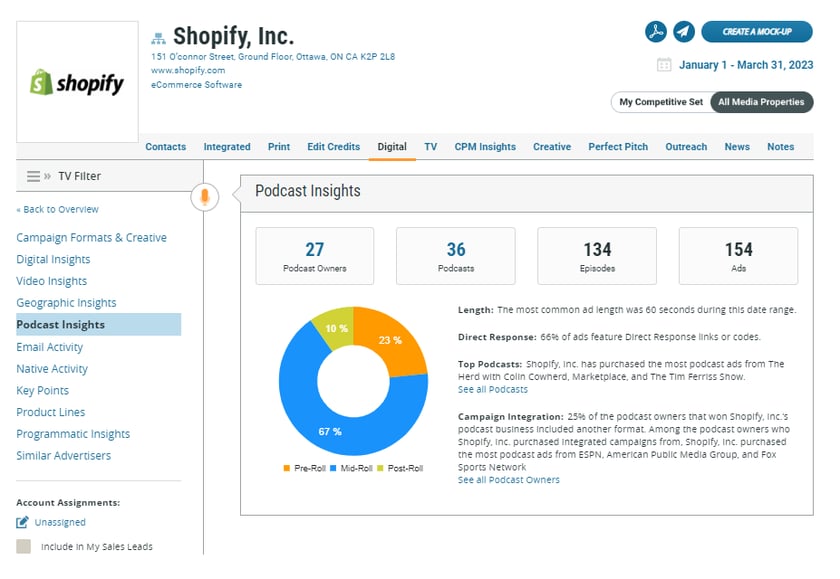
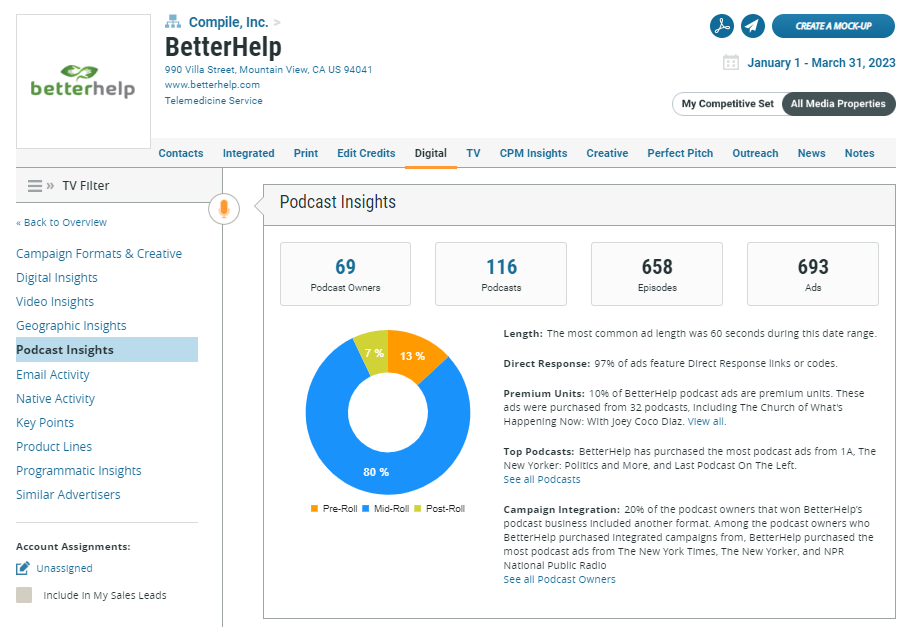
Advertisers aren’t the only party fixated on podcasts. Spotify CEO, Daniel Ek, said the company spent big on original shows and exclusive content to “retain users and boost advertising revenue.”
Spotify’s investment in podcasting has been so profound that eMarketer predicted the digital music service would soon become the “Netflix of audio.”
If that prediction becomes a reality, Spotify will continue to monopolize podcast advertising. According to eMarketer, Spotify’s ad-supported listener growth will outpace its paid listener growth over the next several years. Ad revenue is expected to increase by 30% this year alone.
Spotify’s dominance will, in turn, force the hands of others in the ecosystem to shift to alternative revenue streams, like premium podcasting and memberships.
Online video (OLV) ads
Digital video is set to soar past TV in viewing time this year, and as it does, advertisers are upping their investment in OLV ads.
In Q1, 12.2k advertisers spent $6.3b on video, up 13% YoY. Unsurprisingly, almost all those ad dollars ($5.7b or 91%) went to YouTube. (Ad spending on YouTube increased by 28% YoY.)
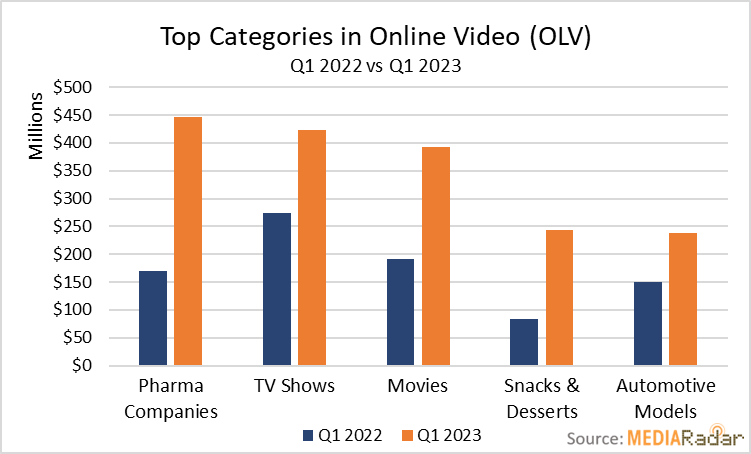
Interestingly, pharma advertisers who’ve historically steered clear of digital formats upped their investment considerably in YouTube advertising to promote OTV meds and prescriptions.
Overall, pharma advertisers, including Gilead Sciences (Preparation H, Epclusa) and AbbVie (BOTOX), increased OLV ad spending by 163% YoY to $446mm.
Meanwhile, spending for TV shows increased by 54% YoY to $422.5mm thanks to big investments from Amazon, The Walt Disney Company, and Warner Bros. Discovery to promote shows like Harlem and The Last of Us. At the same time, spending to promote movies and films increased by 105% YoY to $392mm.
Advertisers for snacks & desserts (Mondelez, Lindt Lindor, and Ferrero Rocher, etc.) and automotive models (Hyundai, General Motors, Buick, Chevrolet, etc.) also upped their investment in OLV advertising.
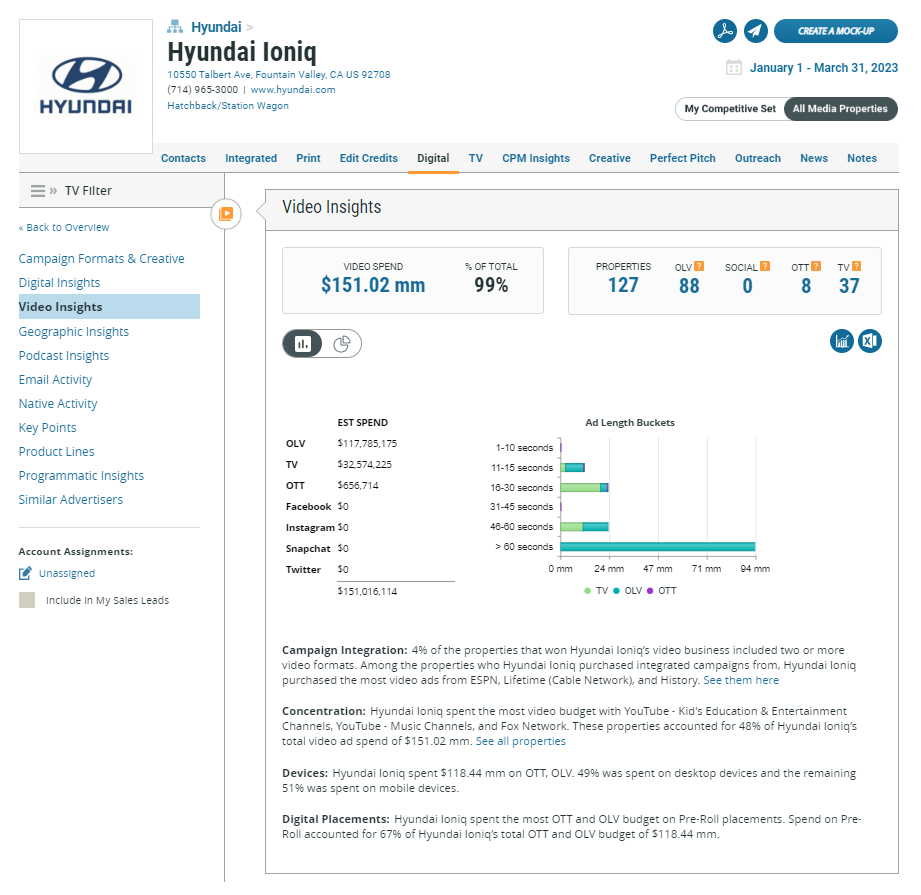
OLV’s universal adoption has been plenty to get advertisers excited, as has YouTube’s more than 2.6 billion active users who spend more than 45 minutes a day on the platform.
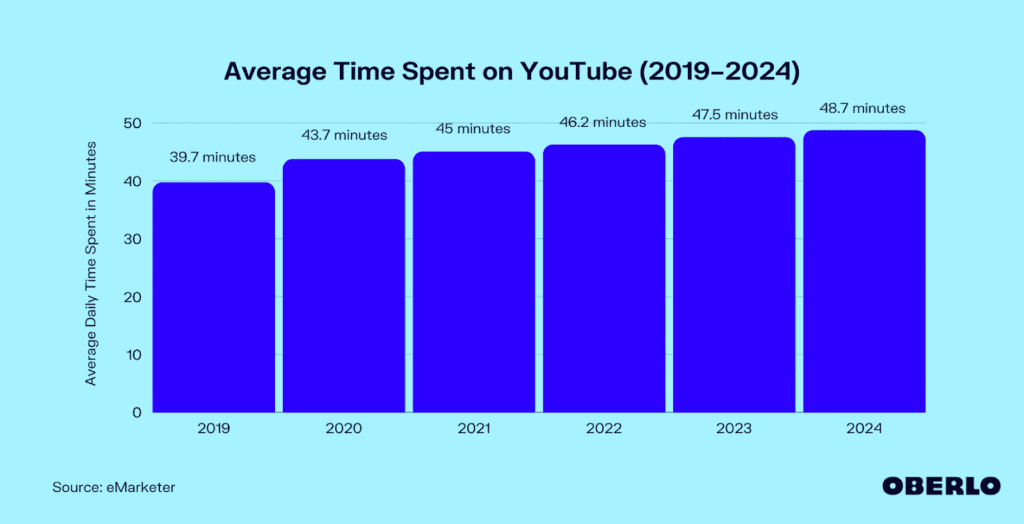
Moving forward, video’s appeal, but especially YouTube’s, could be about something much smaller. While YouTube’s audience will always far surpass its contemporaries, advertisers drawn to it may be done so by the opportunity to reach niche audiences.
For example, gaming advertisers can advertise on the thousands of channels on YouTube Gaming Live. In an expanding online world with dwindling targeting capabilities, channels that can offer advertisers the ability to reach refined audiences will stand the test of time.
Authenticity & Alignment Will Be Key in 2023
Authenticity and audience alignment will be the name of the game moving forward. In 2023 and beyond, advertisers will prioritize channels that can provide them with an authentic means to reach targeted consumers.
Online video and podcast ads are already checking those boxes, which will continue to catch advertisers’ eyes—and ad dollars—far beyond 2023.
For more insights, sign up for MediaRadar’s blog here.



